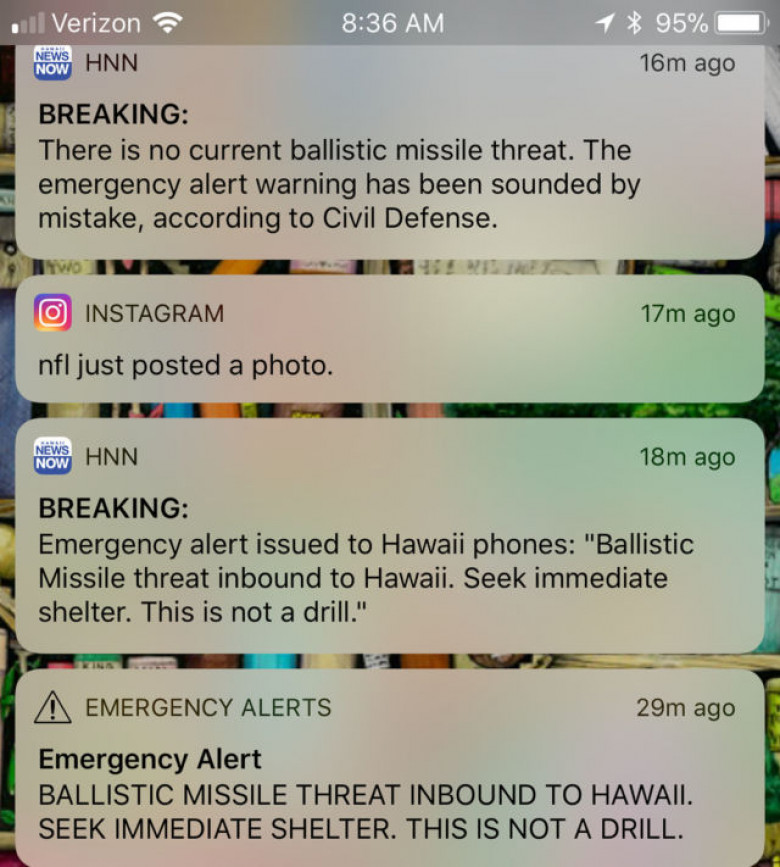Here’s how to make sure Hawaii’s missile warning fiasco isn’t repeated
By now, most people have heard about the erroneous incoming ICBM alert in Hawaii. There's been scrutiny of the how the emergency alert system works and of how international tensions and the flight times of missiles can lead to accidental nuclear war. I'd like to focus instead on how the systems design in Hawaii led to this problem—a design that I suspect is replicated in many other states.
One possible factor, of course, is hurried design:
"We spent the last few months trying to get ahead of this whole threat so that we could provide as much notification and preparation time to the public," Miyagi said. "…I accept responsibility for this, this is my team, we made a mistake."










































































